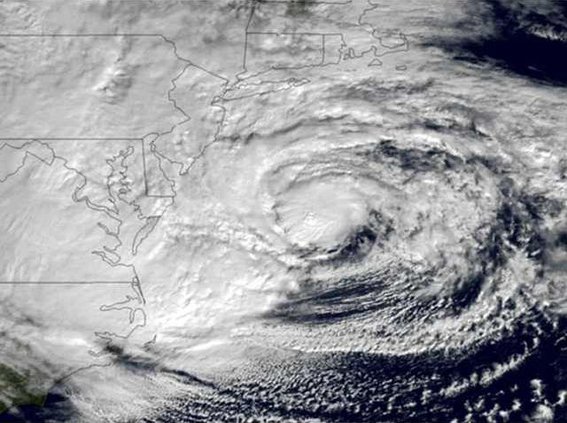Liberty County Emergency Management Agency Deputy Director Larry Logan calls Superstorm Sandy a “once-in-a-lifetime” event. Director Mike Hodges said the technical term for the storm is “extra-tropical cyclone.”
Wednesday afternoon, the two men discussed the storm that ravaged the Northeast and the role local emergency-management agencies are playing in helping communities affected by it “We’ve had a lot of people who’ve volunteered to go help,” Hodges said, explaining it’s not a good idea for local agencies to “self-deploy” or be too hasty about accepting volunteers. “We have to be careful the people who are volunteering don’t have a criminal record, that they’re not pedophiles taking advantage of the situation.”
He said so far, only Red Cross volunteers have left Liberty County to assist victims caught in the path of the giant storm.
Hodges said the Georgia Emergency Management Agency has sent out volunteer guidelines to local agencies. The release advises volunteers to affiliate with established nonprofit organizations and reminds them when they volunteer, they have to be self-sufficient. They must provide for their own food, shelter, personal hygiene and medical needs, including medical insurance.
“When GEMA does a call-up for volunteers, usually they’ll do it in two ways,” he said. “One, they’ll do a call for the general public to help with the cleanup. Then they might do a call-up for professionals, like if they need an emergency manager to take the place of one who needs a break.”
He said every state is connected with the Emergency Management Assistance Compact, which provides disaster assistance by allowing states to send personnel, equipment and supplies as relief during governor-declared states of emergency caused by natural disasters.
“I honestly don’t think there’s going to be a call for assistance from New York,” Hodges said. “We’re not talking about a rural area there. They have lots of resources. It is possible that states with fewer resources may call for assistance, though.”
Hodges said Sandy already was a large storm long before it reached the Northeast. He noted that when the storm was well off-shore and parallel to Jacksonville, it already was sending rain bands as far north as New York, roughly 1,000 miles away.
Logan added that Hurricane Sandy ceased to be a hurricane by the time it came ashore Monday near Atlantic City. To make a bad situation worse, he said the storm surge came ashore during high tide and a full moon.
“Superstorm Sandy is not a hurricane,” Logan said. “It’s a hybrid storm, where a tropical front merged with a cold front. It’s bad because it came in as a large storm and got larger when it merged with the cold front. It’s also been persistent, dumping lots of rain for days.”
He said most hurricanes lose their strength as soon as they make landfall. But Sandy joined with the cold front, making it a greater threat than any storm on record. And because it became a superstorm, no one really knew how bad it was going to be, he said.
Hodges said that a lot of people think that when the storm is over, it’s simply a matter of cleaning up and rebuilding. It’s not that simple, he said, noting both the cleanup and rebuilding will take a lot of time and money.
He said estimates already are putting the cost of the storm at more than $20 billion.
“This is the kind of storm we’ve been talking about for years,” Hodges said. “And I’m afraid our turn (here in coastal Georgia) is on the way. It’s one of those things that keep you up at night.”
He said if such a storm was approaching this area, the first thing his agency would do was order an evacuation of the area.
After the storm, Hodges said the Liberty County EMA would assist local authorities in getting critical infrastructures like hospitals and nursing homes back in operation, along with police and fire department support.
Sandy gives emergency workers pause


Sign up for our e-newsletters